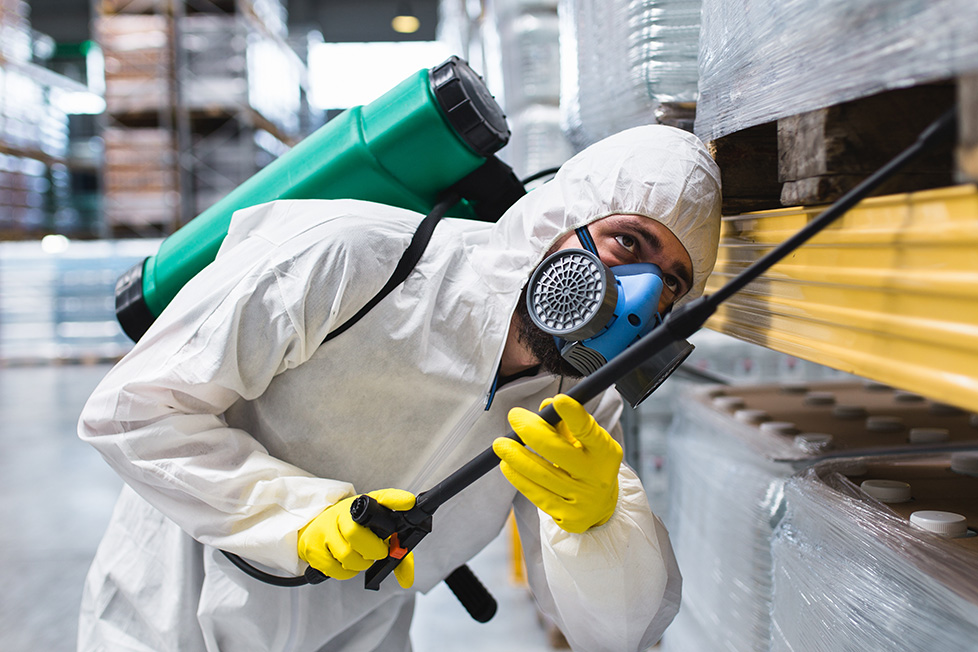Keep your home safe with Pest Control and prevent future infestations.
Eco-Friendly Insect Control Approaches for Handling Wild Animals in Urban Areas
Urban locations frequently discover themselves at the crossway of human task and wild animals, leading to special difficulties in insect administration. These strategies not just safeguard the atmosphere yet also enhance community interaction in wild animals monitoring. As city populaces proceed to grow, comprehending the characteristics of wildlife communications becomes progressively essential.
Recognizing Urban Wildlife Characteristics
Recognizing Urban Wildlife Dynamics is important for creating effective and environment-friendly parasite control strategies. Urban areas are progressively becoming habitats for various wildlife varieties, driven by aspects such as environment fragmentation, food schedule, and human encroachment. Recognizing these characteristics permits a nuanced technique to pest monitoring that lines up with eco-friendly concepts.
Urban wild animals often consists of types such as raccoons, squirrels, and birds, which adjust to city environments, discovering particular niches in eco-friendly areas, parks, and even suburbs. Their presence can result in disputes with humans, especially when they exploit human sources for food and shelter. Recognizing the habits and environmental roles of these varieties educates techniques that decrease unfavorable interactions while advertising biodiversity.
Additionally, acknowledging the interdependencies within urban communities helps in recognizing vital locations for habitat conservation and restoration. This expertise adds to the development of incorporated pest administration (IPM) techniques that consider the environmental balance, consequently decreasing dependence on hazardous chemicals. By fostering coexistence in between human beings and city wildlife, cities can develop much healthier settings that benefit both homeowners and local ecological communities, leading the way for lasting metropolitan living.
All-natural Repellents and Deterrents
All-natural repellents and deterrents offer a sustainable alternative to conventional parasite control methods by using the power of nature to maintain unwanted types at bay. These green services normally make use of plant-based active ingredients, important oils, and various other naturally taking place materials that hinder bugs without harming the atmosphere.
One reliable all-natural repellent is peppermint oil, which is known to repel rodents and bugs. Its strong aroma is undesirable to many bugs, making it a prominent selection for urban settings. In a similar way, vinegar and citrus peels can serve as deterrents, as their strong smells are typically unappealing to various wild animals.
In addition, diatomaceous planet is a natural powder that can be spread out in locations susceptible to insect task, effectively dehydrating and hindering insects without presenting risks to non-target types. Moreover, garlic sprays and neem oil are acknowledged for their ability to fend off a variety of pests, including both bugs and larger wildlife.
Executing these all-natural repellents not only minimizes reliance on chemical pesticides yet additionally advertises a much healthier metropolitan environment, fostering an extra well balanced coexistence in between humans and wild animals. By utilizing these methods, city areas can successfully manage insect populaces while reducing environmental influence.
Environment Adjustment Strategies
Effective habitat modification strategies play a vital role in sustainable bug management by modifying the atmosphere to make it less for pest infestations. By comprehending the eco-friendly characteristics of city areas, building owners can execute tactical modifications that hinder bugs while promoting biodiversity.
(Barn Fly Control)One main method entails keeping correct sanitation. This includes normal waste elimination, protecting garbage can, and getting rid of standing water to lower reproducing websites for bugs and rodents. Additionally, landscape design techniques such as choosing indigenous plants can boost environmental equilibrium, supplying habitats for helpful organisms while lessening resources for bugs.
Another vital technique is to secure entrance points in structures. Evaluating and fixing fractures in structures, walls, and home windows can significantly reduce bug gain access to. Producing physical obstacles, such as fencings or plant buffers, can inhibit wild animals movement into human-inhabited locations.
Integrated Bug Monitoring Practices
Building upon habitat modification strategies, incorporated parasite administration (IPM) methods use a holistic approach to controlling parasite populaces while decreasing ecological effect. IPM combines different techniques, including organic, social, Visit Website mechanical, and chemical controls, to accomplish efficient parasite management.
Biological control entails the introduction of natural killers or bloodsuckers to decrease bug populaces. Cultural methods, such as crop rotation and sanitation, interrupt pest life process and diminish their environments - Pest Control. Mechanical controls, like traps and obstacles, offer immediate alleviation from insect stress without chemical intervention
Chemical controls are made use of as a last resource, concentrating on targeted applications that limit injury to non-target types and the environment. The option of eco-friendly chemicals, when needed, is important to the IPM framework. Additionally, checking pest populations and assessing possible damage aids educate decision-making, making certain that treatments are timely and reliable.
Community Involvement and Education And Learning

(Tentless Termite Treatment)Workshops and informative sessions can outfit citizens with understanding about indigenous species, environment preservation, and efficient safe bug administration techniques. Partnership with schools, regional organizations, and federal government companies even more boosts educational outreach, ensuring that essential info gets to diverse audiences.
Moreover, community-led initiatives, such as area clean-up days and environment remediation jobs, not only advertise biodiversity yet additionally reinforce community connections. Pest control service. By motivating homeowners to share their experiences and observations, neighborhoods can create targeted methods that resolve details neighborhood parasite issues
Incorporating comments from homeowners right into bug monitoring prepares makes it possible for a more responsive and flexible method to wild animals obstacles. Eventually, notified and involved neighborhoods are vital to achieving long-term success in green parasite control, bring about healthier city environments that appreciate both human and eco-friendly requirements.

Conclusion
To conclude, environmentally friendly parasite control approaches offer sustainable services for handling city wildlife. By focusing on environment alteration, making use of all-natural repellents, and applying integrated insect monitoring techniques, communities can promote a harmonious coexistence with regional fauna. Additionally, involving locals via education enhances awareness and motivates responsible wildlife communications. Eventually, these approaches not only protect biodiversity yet also promote ecological health, making certain metropolitan locations stay lively ecological communities where people and wild animals grow with each other.